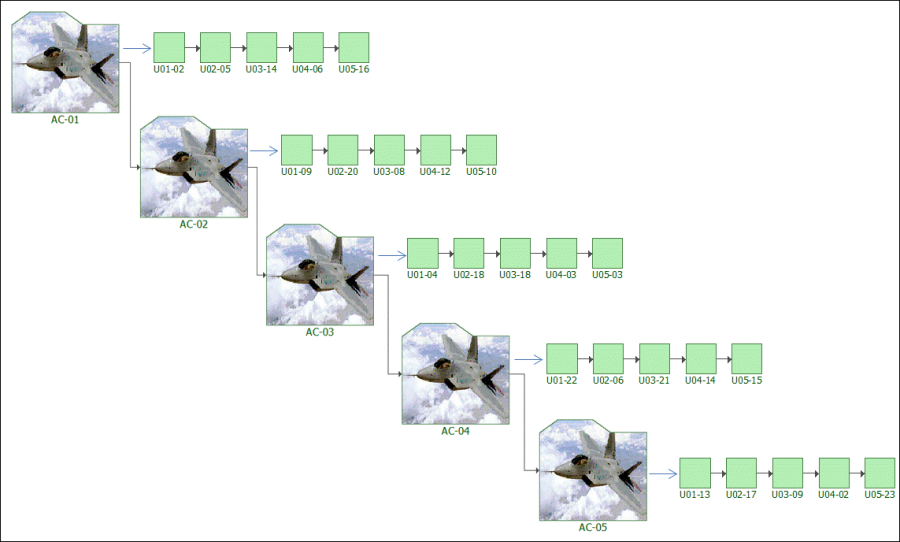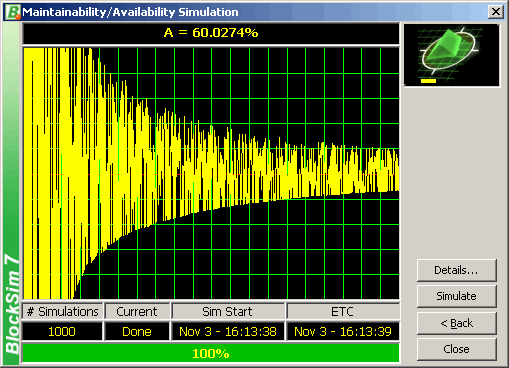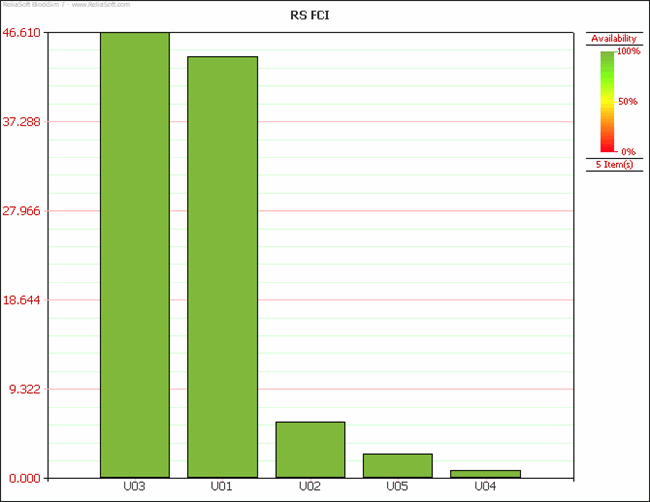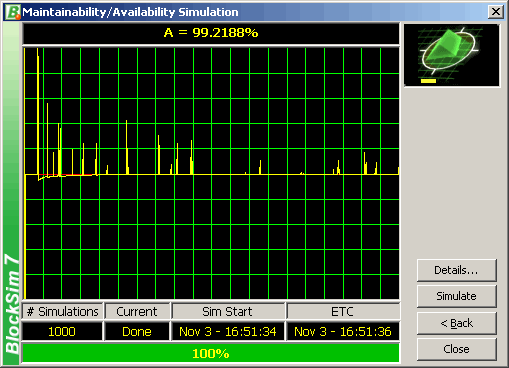Using Simulation to Determine the Required Spare Parts for Fielded Systems
A question that often arises when dealing with a fleet of fielded systems is how many spare parts will be required to support the operation of the fleet and achieve desired availability levels. This article provides an example of how BlockSim can be used to determine the appropriate number of spare parts in this situation.
The example in this article is based on a presentation delivered by ReliaSoft at the 2011 International Applied Reliability Symposium in Bangalore, India [1].
Example
Consider five aircraft that are being prepared for overseas deployment. The goal is to assure that the overall availability for the five-aircraft fleet after 50 flight hours is at least 99%. Therefore, the appropriate number of spare parts that will be required to achieve that goal needs to be determined.
The five most problematic repairable components in the aircraft have been identified to be:
- U01
- U02
- U03
- U04
- U05
After performing a repairable systems analysis, Table 1 shows the MTBF for each of the five components installed in the five aircraft.
Table 1: MTBFs for the components
in the five aircraft
Figure 1 shows the reliability block diagram (RBD) of the entire five-aircraft fleet, with sub-diagrams for each individual aircraft displayed. The assumption of the model is that when any component fails it cannot be repaired and the fleet’s mission is failed.

Figure 1: Reliability block
diagram of the five-aircraft fleet, with sub-diagrams for
each aircraft displayed
Running 1,000 simulations with a mission time of 50 hours yields an availability of 60.0274%, as shown in Figure 2.

Figure
2: Availability of the fleet at 50 hours
Since the calculated availability is lower than the goal of 99%, the next step would be to add a spare part for each of the five replaceable components in the aircraft. Figure 3 shows a new RBD of the five-aircraft fleet, with one standby container for each of the five unique replaceable components. A single spare part (as a standby block) is included in each container. Therefore, according to this diagram, each type of component can be replaced just once for the entire fleet.

Figure 3: RBD of the fleet with a spare part for each replaceable component
Running 1,000 simulations with a mission time of 50 hours yields an availability of 96.2688% as shown in Figure 4.

Figure 4: Availability
of the fleet with a spare part for each replaceable component
Given that the availability target has still not been achieved, the next step is to determine how many additional spare parts are needed and for which components. These questions can be answered by looking at the RS Failure Criticality Index (RS FCI) that is calculated by BlockSim [2]. The RS FCI is defined as the percentage of times that a failure of the component caused a system failure. Thus, it provides an indication of which components are the most problematic ones regarding the system operation.
Figure 5 shows the RS FCI for the five standby containers that represent the five different types of components.

Figure 5: RS FCI for the five standby containers
As it can be seen, the components U03 and U01 are causing the most problems, as they are responsible for 46.61% and 44.068% of the system failures, respectively. Therefore, an additional spare part will be added for each of those two components.
Figure 6 shows the RBD of the fleet, where an additional spare part has been added in the standby containers for components U01 and U03.

Figure 6: RBD of the fleet with an additional spare part for components
U01 and U03
Running another 1,000 simulations to calculate the availability of the fleet at 50 flight hours yields a result of 99.2188%, as shown in Figure 7. This satisfies the availability target.

Figure 7: Availability of the fleet with an additional spare part for components U01 and U03
Conclusion
This article provided an example of how to use simulation in BlockSim to determine the appropriate number of spare parts for a fielded system. As shown, standby containers can be used to model the number of spare parts available to repair the system, while an importance measure such as the RS FCI can be used to identify the bad actors in the system and prioritize which components will require additional spares.
References
[1] Hongan Lin, "Reliability Impact on Financial Performance," International Applied Reliability Symposium, India, 2011.
[2] Results by Component [Online]. Available: https://help.reliasoft.com/reference/system_analysis/sa/repairable_systems_analysis_through_simulation.html#ResultsbyComponent